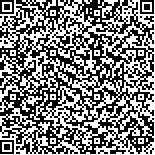下载中心
优秀审稿专家
优秀论文
相关链接
摘要

新一代星载激光雷达卫星ICESat-2将采用多波束微脉冲光子计数技术,并进行高程剖面式的对地观测。由于该点云数据具有背景噪声大、密度低并呈线状分布等特点,传统的点云滤波算法并不适用,研究新的点云滤波算法十分必要。本文以ICESat-2的机载模拟器MABEL数据为例,首先介绍了微脉冲光子计数激光雷达的基本原理和数据特点,并针对高程剖面点云提出基于局部距离统计和最小二乘局部曲线拟合的点云滤波算法;然后,对美国加利福尼亚州Sierras-Forest地区MABEL试验中532 nm通道的光子点云进行滤波处理,并利用识别的地面点插值得到3 m分辨率的线状DEM,进而估算了该区域美国云杉的平均树高;最后,对该滤波算法进行精度评价,并分析了误差来源及其对DEM精度和树高反演精度的影响。结果表明:(1)该算法整体精度达97.6%,能有效剔除绝大部分噪声点且对地形起伏具有较强的自适应能力;(2)误分噪声点影响了滤波过程中局部地形的拟合,而滤波过程中的分类误差将降低DEM和树高反演的精度。
The Ice, Cloud, and land Elevation Satellite-2(ICESat-2)will use a multiple-beam photon-counting LiDAR system to observe the earth surface with profile model at 532 nm. Given that the photon point cloud with low point density captured at a 490 km high altitude is highly affected by noise, especially those from solar background, traditional filtering algorithms for point cloud are not appropriate to the profile photon returns.
We propose an automatic filtering algorithm for the photon profile data acquired by the Multiple Altimeter Beam Experimental LiDAR(MABEL)system, a high-altitude airborne profile-laser altimeter designed as a simulator for ICESat-2. In addition, the basic principle of the multiple-beam photon-counting system, the property of the photon point cloud, and the tree height retrieval method are discussed.
The data processing of MABEL points in this paper mainly consists of three steps.(1)Denoising was implemented in the acquired MABEL data. The frequency histogram for the accumulated distance between the given point and its k-nearest neighbors was assumed as Gaussian-like distribution, whereas the point with its accumulated distance far from the mean distance was recognized as noise.(2)The designed filtering algorithm was applied on the denoised MABEL data. The points were divided into sections along the profile; the lowest point in each section was selected as initial ground returns. Ground points in a window that covers several sections were adopted for modeling the second order local terrain. Least square fitting method was used to determine the local curve parameters. The points in each section were classified into ground points and no-ground points using the adaptive threshold.(3)The labeled ground points were used to produce line-like Digital Elevation Model(DEM)by an interpolation method. The mean vegetation height in the study area can be estimated by comparing the local maximal laser points with the line-like DEM.
The point clouds acquired by the MABEL 532 nm channel at Sierras-Forest in September 2012 were tested with the filtering algorithm. Approximately 2001 points were acquired in the experiment area with 2310 m long. After applying the proposed filtering algorithm, 760 points were labeled as ground, 1159 points were labeled as vegetation, and the remaining 82 points were labeled as noise. Validation results showed the total classification accuracy of the proposed algorithm was 97.6% compared with the manual method. In addition, the line-like DEM and the mean tree height(34.2 m)in the study area were estimated; error analysis was also performed.
This paper introduced the basic principles of multiple-beam photon-counting LiDAR of ICESat-2, a novel point cloud filtering algorithm for MABEL data to separate ground and vegetation points. Both the DEM and the mean tree height were estimated from the filtered data. The following conclusions were obtained:(1)The experiment shows that the filtering algorithm is efficient and self-adapting for separating the ground and vegetation MABEL point.(2)The noise contained in the MABEL data lead to failed labeling, and directly increases the errors of the estimated DEM and tree height.(3)Given the noise level of the ICESat-2 data may be higher than the MABEL data, further studies are needed on both data denosing and ground points detection.

